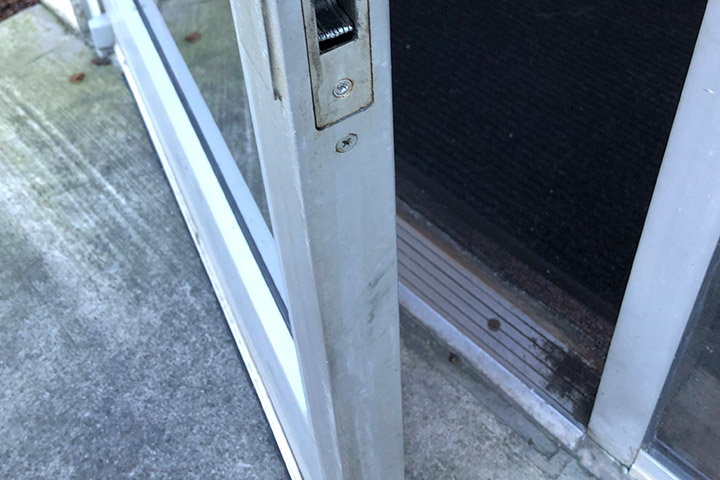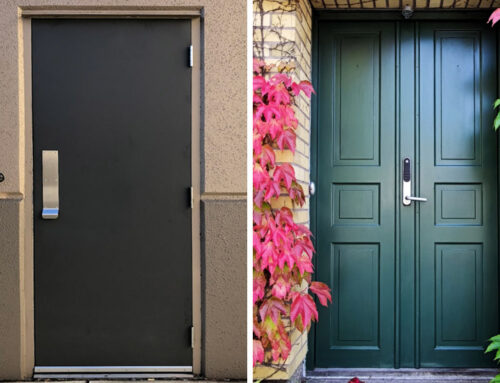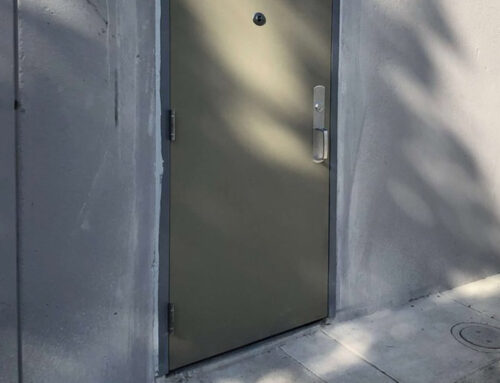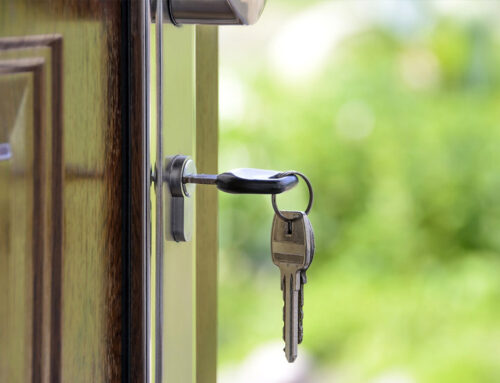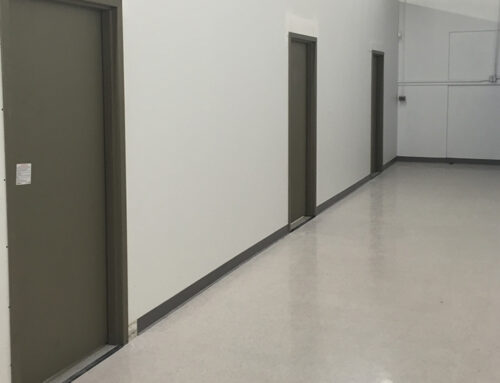Which way should your commercial door swing? Your door swing direction is not just about convenience but also safety and the structural integrity of the building. There are different mandated door swing directions for different kinds of doors and under different building codes. Before you look up how to hang a door, make sure that you’re hanging it in the right direction with this guide.
Exterior Doors
Exterior doors are doors on the outside of the building. Some of these doors, but not necessarily all of them, may be designated as “exit doors” under the California Department of Industrial Relations. These doors are required to open in the direction of egress: away from someone as they are leaving the building. This requirement is for safety, so exiting is faster during emergencies.
The International Building Code is more specific about the swinging of egress doors. When the occupant load is 50 or more, when there is high-hazard occupancy, or where there are exit enclosure doors, the doors must swing in the direction of egress. There are some exceptions built into these rules depending on building type.
There may be other reasons to mandate exterior doors to swing outward beyond safety. For example, an outward swing is better for high wind conditions. It helps the building stay secure during severe storms, including hurricanes. In areas that are prone to windstorms, building code may be more specific about door swing directions.
Almost all exterior doors are sol with a swing direction in mind, so you must confirm it before you purchase it.
Interior Doors
It is much rarer to find mandates for the swing direction of interior doors as they rarely impact the structural integrity of the building. That said, most interior doors swing inwards into the room. There are many exceptions to this that typically the architect of the building determines.
Few interior doors are sold with a swing direction in mind, and most may be installed either way.
Requirements for Fire Doors
Fire doors are one of the few door types that must be hung to swing in a certain direction in order to meet manufacturer requirements and provide the protection that you rely on them for. Typically, these doors must swing outwards, in the direction someone would take if they were escaping from a fire. However, it is very important to confirm this with the building codes and the manufacturer’s guidelines.
Which “Hand” Is My Door?
“Hand” is not usually referenced in building codes because it is too imprecise. A left-handed door may swing in or out, and it’s the swing direction that matters most. However, you may still want to know which “hand” your door is. Essentially, whichever side of the door is furthest from the hinges is the “hand” of the door. Typically, this is also the side with the handle.
Work with a Professional
When determining which way your commercial door should swing, it is wise to work with an expert to ensure you stay within building code guidelines and safety best practices.

